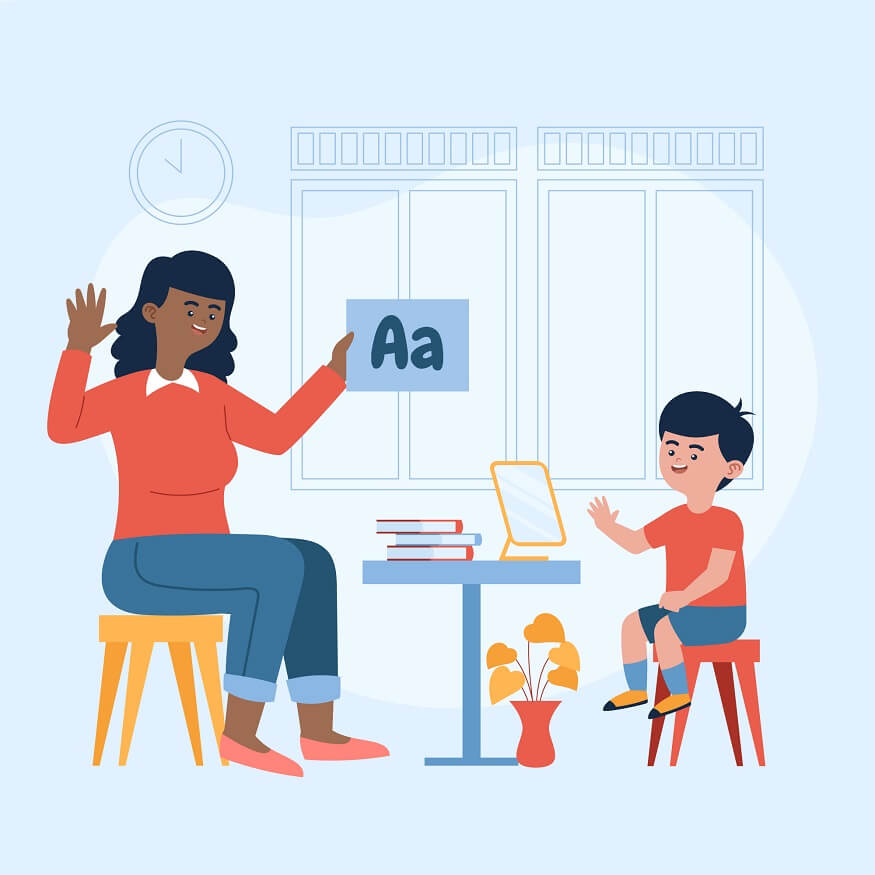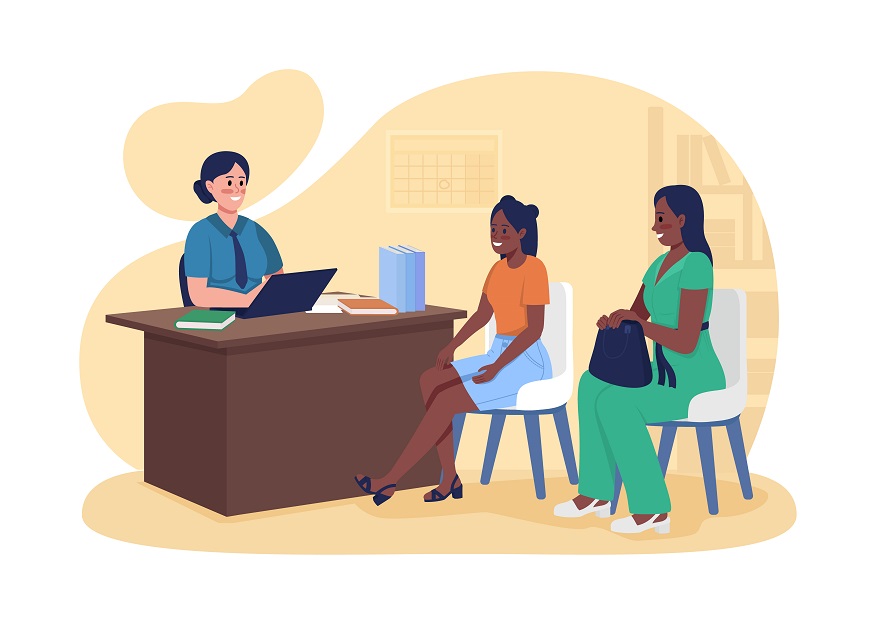Recognising and comprehending many different types of learning difficulties that children experience is critical in the current educational environment. Learning disabilities can present significant challenges for individuals, impacting their ability to acquire knowledge and skills in traditional ways. But people with learning difficulties may get through these obstacles and succeed academically and emotionally with the correct help and tools. Will examine different types of learning disabilities, examine existing support systems, and go through key resources that can help students with learning disabilities succeed in school.
Types of Learning Disabilities
Dyslexia: Challenges in Reading and Language Skills
Dyslexia is a learning condition that mostly impacts language and reading abilities. For those who have dyslexia, reading written information may be difficult to understand and recognize words. Students with dyslexia may frequently encounter challenges when it comes to accurate spelling, fluent reading, and comprehending the meaning of written words. As a result, their academic progress in subjects that heavily rely on reading and language abilities can be adversely affected.
Dyscalculia: Difficulties with Mathematical Abilities
Dyscalculia is a different type of learning disability that affects mathematical abilities. Knowledge of numbers, executing calculations, and completing mathematical problems can be challenging for those who have dyscalculia. They may struggle with basic arithmetic, number sense, and mathematical reasoning. Dyscalculia can pose challenges in various aspects of mathematics education, such as understanding mathematical concepts, memorising maths facts, and applying problem-solving strategies.
Dysgraphia: Impaired Writing Skills
Dysgraphia is a learning disability that specifically affects a person’s writing skills. Individuals with dysgraphia may find it challenging to produce legible handwriting and organise their thoughts coherently on paper. They may struggle with letter formation, spacing, and the ability to express their ideas in a written format. Dysgraphia can affect their ability to effectively communicate through written expression and hinder their written assignments and note-taking.
Attention-Deficit/Hyperactivity Disorder (ADHD)
ADHD is a condition that affects attention span, impulse control, and hyperactivity levels. It is a neurodevelopmental disease that can make it difficult for people to maintain concentration and urge control. Individuals with ADHD may have trouble sustaining focus, following instructions, and managing their time effectively. These challenges can significantly impact their academic performance, as they may struggle to stay on task, complete assignments, and absorb information in a classroom setting.
Also Read: Repetitive Strain Injuries in Sports: Symptoms, Examples, Treatment
Support Systems for Students with Learning Disabilities
Early Identification and Diagnosis
Early identification and diagnosis of various learning disabilities are crucial for implementing appropriate interventions. Teachers, parents, and educational professionals should be vigilant in recognizing signs of different learning disabilities, such as persistent difficulties in specific academic areas or noticeable behavioural patterns. When concerns arise, seeking professional evaluations from specialists, such as educational psychologists, can help identify and diagnose learning disabilities accurately.
Individualised Education Plans
Individualised Education Plans outline specific accommodations and modifications to address the unique needs of students with different learning disabilities. They provide a roadmap for supporting the student’s academic progress and may include provisions such as extended time for exams, preferential seating, assistive technology, and specialised instruction tailored to their specific learning needs.
Classroom Accommodations
Classroom accommodations play a vital role in supporting students with different types of learning disabilities. To accommodate each student’s unique needs, teachers might modify the classroom setting and teaching strategies. Some examples of classroom accommodations include breaking down complex tasks into smaller, manageable steps, providing visual aids such as charts or diagrams, offering alternative modes of assessment, and allowing flexible seating arrangements to optimise comfort and focus.
Assistive Technology
Assistive technology tools can enhance learning and compensate for specific challenges faced by students with various learning disabilities. These tools include software, apps, or devices designed to assist individuals in their academic pursuits. By turning written text into spoken words, text-to-speech software can assist kids who struggle to read or have dyslexia. Speech recognition software can facilitate writing tasks for individuals with dysgraphia. Graphic organisers can assist with organising thoughts and ideas, while tablets and computers with accessibility features enable easier navigation and interaction with digital content.
Inclusive Classroom Environment
Students with learning difficulties require a supportive and inclusive learning environment. Teachers can foster empathy and understanding by educating the entire class about different learning disabilities and promoting an inclusive mindset. Open communication channels between students, parents, and teachers are crucial for addressing concerns, providing feedback, and discussing individual needs. Peer collaboration can be encouraged through group work and cooperative learning strategies, allowing students to support and learn from one another. Giving children with learning difficulties chances for individualised attention, such as one-on-one check-ins or small group instruction, can help them even more.
Also Read: How to set limits and consequences for your child
Resources for Individuals with Learning Disabilities
Educational Websites and Apps
Numerous websites and mobile applications offer interactive learning materials, adaptive exercises, and assistive tools specifically designed for individuals with various learning disabilities. Learning Ally provides audiobooks and other accessible resources for individuals with dyslexia. Khan Academy offers a wide range of educational videos and practice exercises across various subjects. Bookshare provides a vast digital library of accessible books for individuals with print disabilities.
Support organisations
Non-profit organisations that focus on assisting those with learning difficulties as well as their families These groups provide several beneficial resources, workshops, and assistance services. The Learning Disabilities Association of America (LDA) is a prominent organisation that provides information, support networks, and advocacy initiatives. The National Centre for Learning Impairments (NCLD), which provides resources, tools, and policy recommendations to empower people with learning impairments and their families, is another significant organisation. These organisations are committed to helping and supporting people with different types of learning difficulties.
Professional Assessment and Guidance
Getting help from professionals like educational psychologists, speech therapists, and occupational therapists can provide accurate assessments and personalised guidance. They offer expert advice and specific interventions to address individual needs effectively. Educational psychologists can conduct comprehensive assessments to identify specific different types of learning disabilities and provide recommendations for intervention strategies. Speech and language therapists can offer therapy sessions to address language-based learning difficulties.
Community Programmes and Services
Many communities offer specialised programmes and services for individuals with different learning disabilities. These initiatives offer extra assistance and foster a sense of community for people with learning difficulties and their families. Local education departments, community centres, and nonprofit organisations frequently plan these.
Also Read: How to teach your child to tie their shoes
Conclusion
Recognising and assisting those who have different types of learning disabilities is crucial for creating an inclusive learning environment. Individuals with learning impairments can overcome hurdles and prosper through early detection of these issues, appropriate assistance, and the use of the resources at hand. A supportive and equal-opportunity environment has to be fostered by society, parents, and education. We can create a society that values the special talents and difficulties of people with learning impairments with more knowledge and access to resources. Together, let us work towards a more inclusive and empowering educational experience for everyone.
Euroschool strives to cultivate a comprehensive comprehension of diverse learning disabilities while providing unwavering support and abundant resources for students encountering such obstacles. Embracing inclusiveness and personalised education as core values, Euroschool acknowledges the individual needs of learners and endeavours to foster an environment wherein they can flourish. By delivering specialised interventions, customised learning plans, and facilitating access to assistive technology, Euroschool equips students with indispensable tools for conquering hindrances and attaining their utmost potential. Through collaboration with professionals, support organisations, and community programmes, Euroschool ensures that students with different types of learning disabilities receive the necessary guidance and resources to succeed academically and personally.











